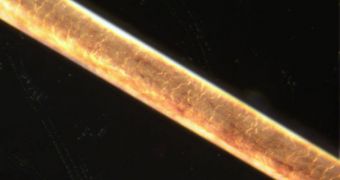A team of experts recently managed to track down and analyze the activity of “clock genes” in the human body. All they need to conduct their work are a few strands of hair.
The circadian rhythm, also known as the body's internal clock, is responsible for controlling each our sleep-wake cycle. However, each person is different when it comes to sleeping patterns.
Some may like staying up at night more than during the day, while others may have an easier time getting up in the morning.
For years, geneticists and microbiology experts have been struggling to identify and extract the genes responsible for causing these variations in individual circadian rhythms.
Gaining more insight into this mechanism could help investigators form a better picture of various sleep disorders, as well as of jet lag. The work could also provide new therapies for sleep conditions.
Details of the recent investigation appear in the August 23 issue of the esteemed journal Proceedings of the National Academy of Sciences (PNAS), LiveScience reports.
Previous studies have already identified some clock genes. Some of them were discovered as far back as a decade ago.
But experts have thus far been lacking a way of identifying and collecting even more of these clock genes. The answer appears to have been in front of their eyes all this time, literally.
A team from the Yamaguchi University in Japan, led by expert Makoto Akashi, demonstrated recently that all it takes for identifying and analyzing circadian genes are a few strands of hair.
Apparently, the activity these genes undertake leaves marks in cells located at the base of hair follicles. The cells themselves remain attached to the hair when strands are pulled out.
By harvesting between 5 and 20 strands of hair from people – depending on the type of hair they have – researchers can create a picture of the recent activity of clock genes.
At this point in time, the new analysis technique is only reserved for specialized research laboratories, but its creators hope to make it ready available to hospitals and clinics soon.
In order for that to happen, the finding needs to be be researched in more detail, and portable analysis machines devised.

 14 DAY TRIAL //
14 DAY TRIAL //